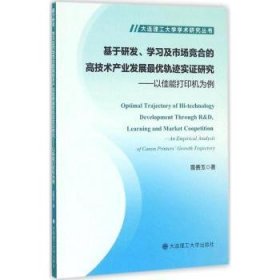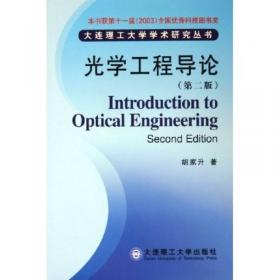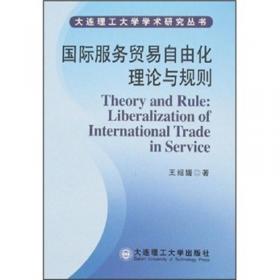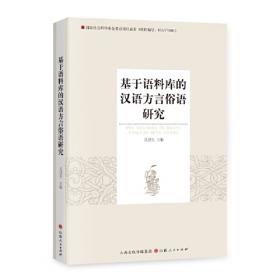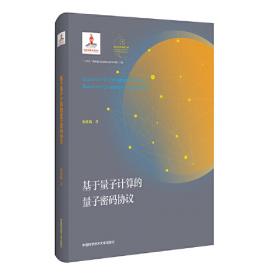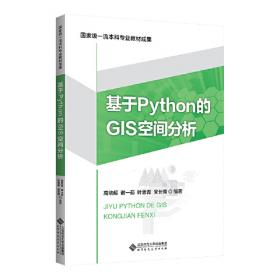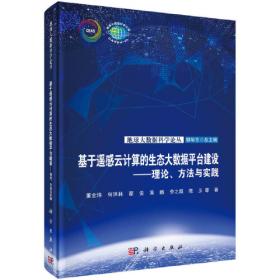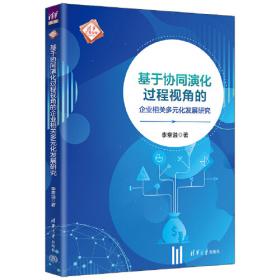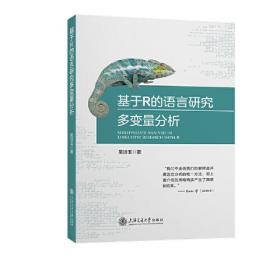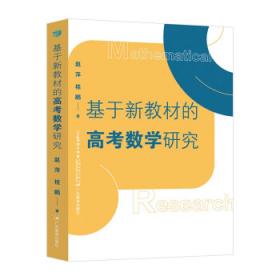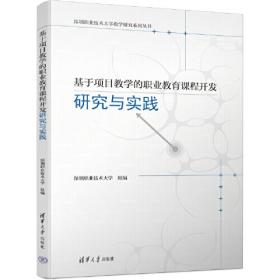基于研发、学习及市场竞合的高技术产业发展最优轨迹实证研究 以佳能打印机为例(英文版)
出版时间:
2016-06
版次:
1
ISBN:
9787568503983
定价:
29.00
装帧:
平装
开本:
32开
纸张:
胶版纸
页数:
161页
字数:
170千字
正文语种:
简体中文,英语
2人买过
-
日本的电子电气企业闻名于世界,但是进入信息化社会之后,它们的发展轨迹却出现了两极分化,佳能企业在众多的企业中脱颖而出,保持良好的发展势头。全书以日本电子电气的企业,特别是佳能企业及其打印机的发展轨迹为对象,通过优理论及计量经济模型进行实证研究,揭示了高技术企业在发展的过程中,加强企业的内部研发能力、外部的市场学习以及与竞争对手之间的竞合来保证其优发展轨迹的重要性,为高技术企业的可持续性发展提供了重要的理论参考。
本书既可以为从事技术管理、创新管理研究的学者研究提供理论参考,也可以为高技术企业的经营者及相关产业的政府决策者提供有价值的发展思路,借鉴佳能企业的成功发展实践提升我国高技术企业发展的竞争力。 雷善玉,1971年5月生,2007年毕业于日本东京工业大学经营工学专业,获经营工学博士学位,现为大连理工大学管理与经济学部副教授,主讲“技术管理”“管理经济学”等课程,研究方向为技术经济、创新管理、企业及产业可持续发展等。 Chapter I Introduction
1.1 Background
1.2 Hypothetical View
1.3 Existing Works
1.4 Focus of the Analysis
1.5 Structure of the Book
References
Chapter II Converging Trend of Innovation Efforts and Economic Performance——A Case of Japan's Electrical Machinery Industry
2.1 Introduction
2.2 Converging Trend of Innovation Efforts in Japan's Electrical Machinery Firms Under New Paradigm
2.2.1 Virtuous Cycle of Effective R&D Investment Leading to Increase in Technology Stock
2.2.2 Trigger Role of Marginal Productivity of Technology Dichotomizing Development Trajectories
2.2.3 Development Trajectories of Japan's Leading Electrical Machinery Firms
2.3 Canon's Sustainable Growth Trajectory Focusing on Techno-logical Diversification and Firm's Techno-economic Structure
2.3.1 Technological Diversification and Marginal Productivity of Technology
2.3.2 Technological Diversification, TFP and Internal Rate of Return to R&D Investment
2.3.3 Factors Inducing a Virtuous Cycle Between R&D Investment and Technological Diversification
2.4 Conclusion
References
Appendix: Bi-logistic Growth Trajectory in the Follower Firms
Chapter III Optimal Trajectory of Hi-tech Products Through EffectiveR&D Investment and Market Learning——An Empirical Analysis of Canon Printers'Growth Trajectory
3.1 Introduction
3.2 Analytical Framework
3.2.1 Main Variables
3.2.2 Main Parameters
3.2.3 Model Description
3.2.4 Optimal Control Problem
3.2.5 Maximum Principle of Pontryagin
3.2.6 Hamiltonian Systems 64
3.3 Optimal R&D Investment and Learning
3.3.1 Effect of Obsolescence of Technology
3.3.2 Optimal R&D Intensity 66
3.3.3 Optimal Learning 67
3.3.4 Optimal Marginal Productivity of Technology (MPT)
3.4 Impacts on Learning Coefficient —— A Case of Canon Printers
3.5 Conclusions
Appendix
References
Chapter IV The Role of Techno-Countervailing Power in Inducing the Development and Dissemination of New Functionality——An
Analysis of Canon Printers and Japan's Personal Computers
4.1 Introduction
4.2 Impact of Countervailing Power Among Suppliers on Function-ality Development- Demonstration of the Hypothesis of Supply Side
4.2.1 Dynamism among Price Elasticity to Technology, Techno-countervailing and Functionality Development
4.2.2 Measurement of Elasticity of Prices to Technology (λ)A Case of Canon Printers
4.2.3 Measurement of Elasticity of Technology to Technology Cmpetition ( ) A Case of Canon Printers
4.2.4 Measurement of Functionality Development —— A Case of Canon Printers
4.3 Dynamism of Countervailing Power Between Supply and Demand Markets in Printers Development Demonstrationof the Hypothesis of Demand Side
4.3.1 Impact of Functionality Development on Induction of Supply and Demand —— A Case of Canon Printers
4.3.2 Contribution to Prices Decrease from Both Supply and Demand Sides- A Case of Canon Printers and Japan's PCs
4.3.3 The Role of Techno-Countervailing Power
4.4 Conclusion
Appendix
References
Chapter V Fusing Indigenous Technology Development and Market Learning for Higher Functionality Development
5.1 Introduction
5.2 Framework of the Analysis —— Diffusion Trajectory of Innovative Products
5.2.1 Functionality Development
5.2.2 Governing Factors to Functionality Development
5.2.3 Requirement to Sustainable Functionality Development
5.3 Empirical Evidences —— A Case of Canon Printers'Development
5.3.1 Growth Trajectory Of Canon Printers
5.3.2 Fusing Effects of Indigenous Technology Development and Market Learning
5.3.3 External Learning for Sustainable Functionality Development
5.3.4 Implication to Firms Profit
5.4 Conclusions
References
Appendix
Chapter VI Conclusion
6.1 General Summary
6.2 New Findings
6.3 Implications
6.4 Future Works
Acknowledgement
-
内容简介:
日本的电子电气企业闻名于世界,但是进入信息化社会之后,它们的发展轨迹却出现了两极分化,佳能企业在众多的企业中脱颖而出,保持良好的发展势头。全书以日本电子电气的企业,特别是佳能企业及其打印机的发展轨迹为对象,通过优理论及计量经济模型进行实证研究,揭示了高技术企业在发展的过程中,加强企业的内部研发能力、外部的市场学习以及与竞争对手之间的竞合来保证其优发展轨迹的重要性,为高技术企业的可持续性发展提供了重要的理论参考。
本书既可以为从事技术管理、创新管理研究的学者研究提供理论参考,也可以为高技术企业的经营者及相关产业的政府决策者提供有价值的发展思路,借鉴佳能企业的成功发展实践提升我国高技术企业发展的竞争力。
-
作者简介:
雷善玉,1971年5月生,2007年毕业于日本东京工业大学经营工学专业,获经营工学博士学位,现为大连理工大学管理与经济学部副教授,主讲“技术管理”“管理经济学”等课程,研究方向为技术经济、创新管理、企业及产业可持续发展等。
-
目录:
Chapter I Introduction
1.1 Background
1.2 Hypothetical View
1.3 Existing Works
1.4 Focus of the Analysis
1.5 Structure of the Book
References
Chapter II Converging Trend of Innovation Efforts and Economic Performance——A Case of Japan's Electrical Machinery Industry
2.1 Introduction
2.2 Converging Trend of Innovation Efforts in Japan's Electrical Machinery Firms Under New Paradigm
2.2.1 Virtuous Cycle of Effective R&D Investment Leading to Increase in Technology Stock
2.2.2 Trigger Role of Marginal Productivity of Technology Dichotomizing Development Trajectories
2.2.3 Development Trajectories of Japan's Leading Electrical Machinery Firms
2.3 Canon's Sustainable Growth Trajectory Focusing on Techno-logical Diversification and Firm's Techno-economic Structure
2.3.1 Technological Diversification and Marginal Productivity of Technology
2.3.2 Technological Diversification, TFP and Internal Rate of Return to R&D Investment
2.3.3 Factors Inducing a Virtuous Cycle Between R&D Investment and Technological Diversification
2.4 Conclusion
References
Appendix: Bi-logistic Growth Trajectory in the Follower Firms
Chapter III Optimal Trajectory of Hi-tech Products Through EffectiveR&D Investment and Market Learning——An Empirical Analysis of Canon Printers'Growth Trajectory
3.1 Introduction
3.2 Analytical Framework
3.2.1 Main Variables
3.2.2 Main Parameters
3.2.3 Model Description
3.2.4 Optimal Control Problem
3.2.5 Maximum Principle of Pontryagin
3.2.6 Hamiltonian Systems 64
3.3 Optimal R&D Investment and Learning
3.3.1 Effect of Obsolescence of Technology
3.3.2 Optimal R&D Intensity 66
3.3.3 Optimal Learning 67
3.3.4 Optimal Marginal Productivity of Technology (MPT)
3.4 Impacts on Learning Coefficient —— A Case of Canon Printers
3.5 Conclusions
Appendix
References
Chapter IV The Role of Techno-Countervailing Power in Inducing the Development and Dissemination of New Functionality——An
Analysis of Canon Printers and Japan's Personal Computers
4.1 Introduction
4.2 Impact of Countervailing Power Among Suppliers on Function-ality Development- Demonstration of the Hypothesis of Supply Side
4.2.1 Dynamism among Price Elasticity to Technology, Techno-countervailing and Functionality Development
4.2.2 Measurement of Elasticity of Prices to Technology (λ)A Case of Canon Printers
4.2.3 Measurement of Elasticity of Technology to Technology Cmpetition ( ) A Case of Canon Printers
4.2.4 Measurement of Functionality Development —— A Case of Canon Printers
4.3 Dynamism of Countervailing Power Between Supply and Demand Markets in Printers Development Demonstrationof the Hypothesis of Demand Side
4.3.1 Impact of Functionality Development on Induction of Supply and Demand —— A Case of Canon Printers
4.3.2 Contribution to Prices Decrease from Both Supply and Demand Sides- A Case of Canon Printers and Japan's PCs
4.3.3 The Role of Techno-Countervailing Power
4.4 Conclusion
Appendix
References
Chapter V Fusing Indigenous Technology Development and Market Learning for Higher Functionality Development
5.1 Introduction
5.2 Framework of the Analysis —— Diffusion Trajectory of Innovative Products
5.2.1 Functionality Development
5.2.2 Governing Factors to Functionality Development
5.2.3 Requirement to Sustainable Functionality Development
5.3 Empirical Evidences —— A Case of Canon Printers'Development
5.3.1 Growth Trajectory Of Canon Printers
5.3.2 Fusing Effects of Indigenous Technology Development and Market Learning
5.3.3 External Learning for Sustainable Functionality Development
5.3.4 Implication to Firms Profit
5.4 Conclusions
References
Appendix
Chapter VI Conclusion
6.1 General Summary
6.2 New Findings
6.3 Implications
6.4 Future Works
Acknowledgement
查看详情
-
 5
5
全新
北京市丰台区
平均发货28小时
成功完成率86.04%
-
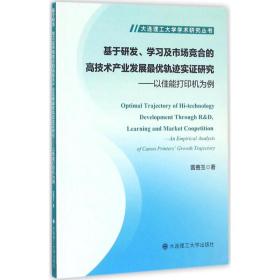 2
2
全新
河北省保定市
平均发货30小时
成功完成率80.64%
-
全新
重庆市綦江区
平均发货16小时
成功完成率81.5%
-
全新
广东省广州市
平均发货17小时
成功完成率95.09%
-
全新
广东省广州市
平均发货18小时
成功完成率94.37%
-
全新
四川省成都市
平均发货20小时
成功完成率78.36%
-
全新
河北省保定市
平均发货14小时
成功完成率57.94%
-
全新
山东省泰安市
平均发货22小时
成功完成率82.19%
-
全新
北京市东城区
平均发货22小时
成功完成率87.71%
-
全新
湖南省邵阳市
平均发货3小时
成功完成率84.09%
-
全新
北京市西城区
平均发货11小时
成功完成率93.54%
-
全新
江苏省无锡市
平均发货8小时
成功完成率96.39%
-
全新
天津市西青区
平均发货15小时
成功完成率91.64%
-
全新
浙江省嘉兴市
平均发货7小时
成功完成率63.64%
-
全新
北京市通州区
平均发货10小时
成功完成率91.78%
-
全新
北京市丰台区
平均发货7小时
成功完成率92.87%
-
全新
广东省广州市
平均发货10小时
成功完成率94.78%
-
全新
山东省泰安市
平均发货8小时
成功完成率92.28%
-
全新
广东省广州市
平均发货7小时
成功完成率89.62%
-
全新
北京市朝阳区
平均发货16小时
成功完成率77.2%
-
全新
北京市朝阳区
平均发货18小时
成功完成率83.01%
-
全新
广东省广州市
平均发货8小时
成功完成率87.35%

 占位居中
占位居中


































